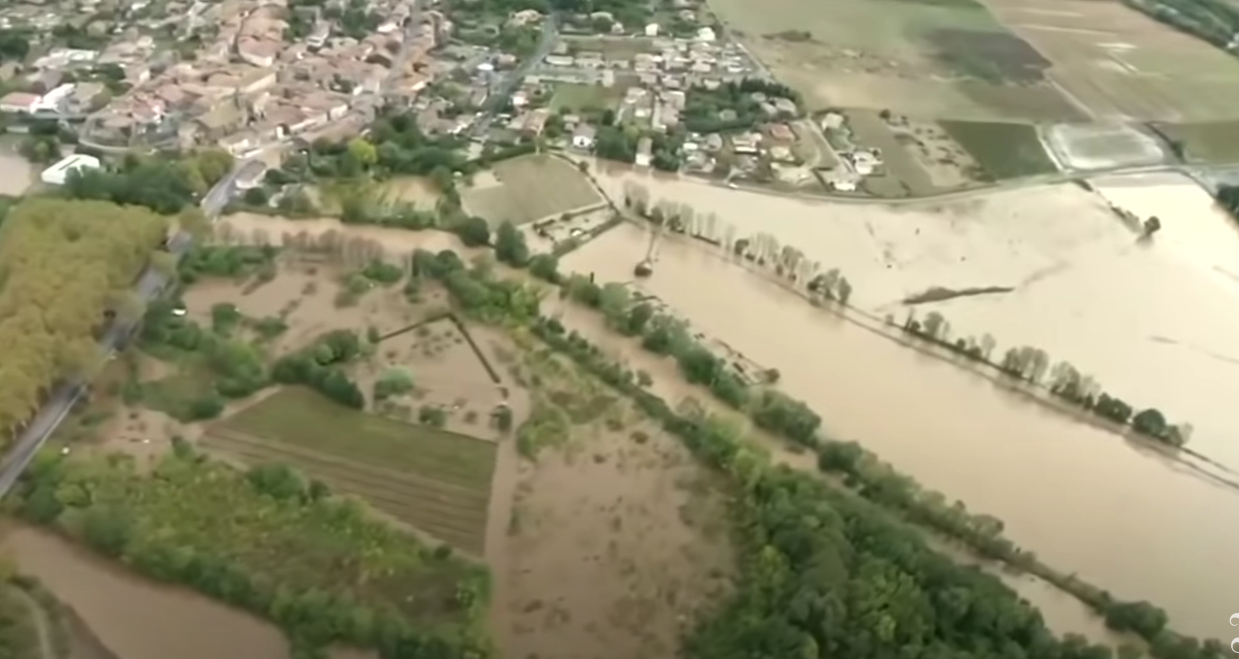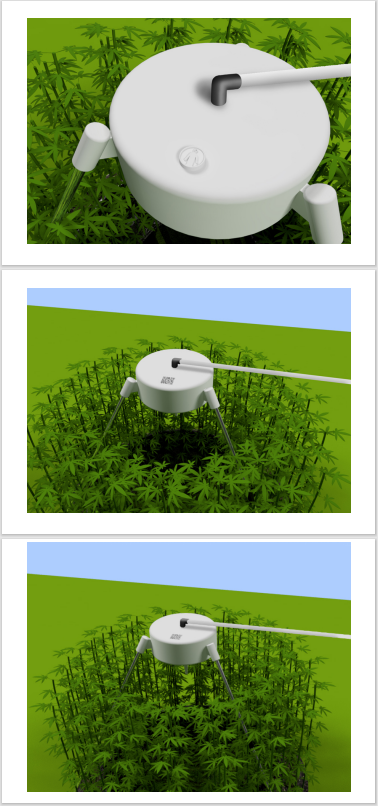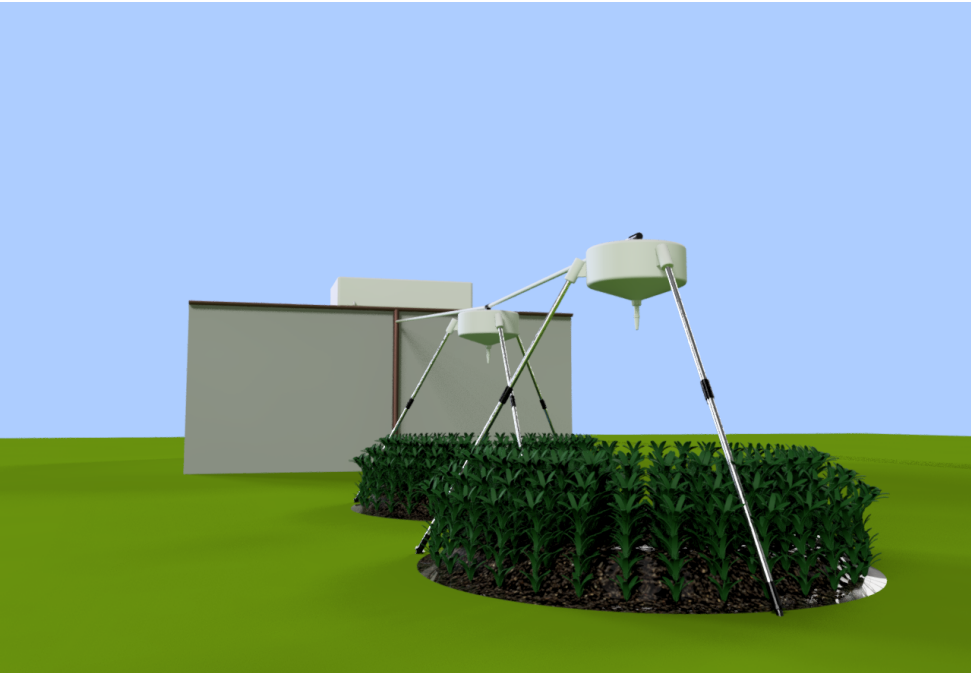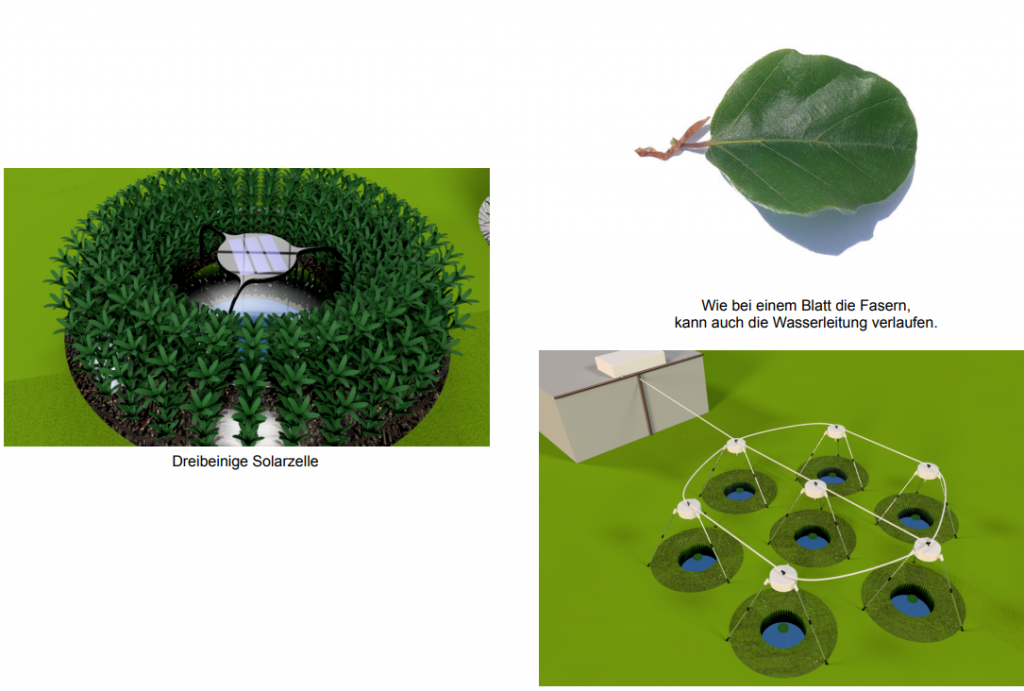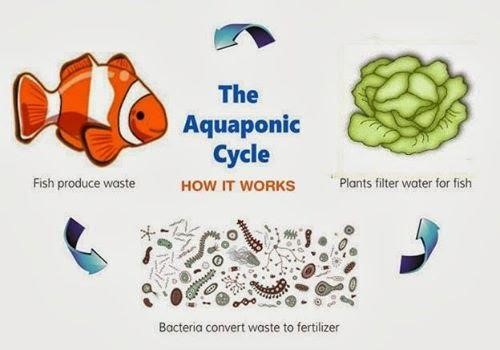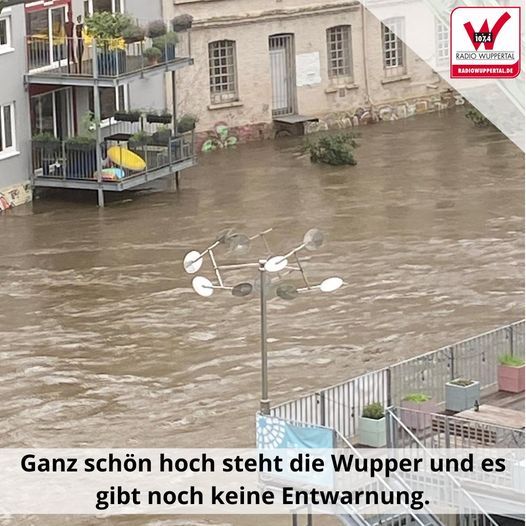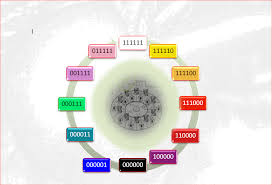ArchBishop Dr. Uwe AE. Rosenkranz

erläutert seine praktische Theologie, Mission und die weltweite Offenbarung seiner Vision.


In seinem Vorwort geht Dr. Georg Gati (VOM TAO DER BIBEL) ein auf die faszinierende Symbolsprache der Bibel.
INHALTE:
Der ROSENKRANZ als SYMBOL für die interkulturelle Kommunikation.
Die Offenbarung aus dem Jahre 1995 wurde geprüft von Dr. John Koeshall, dem damaligen Europa-Leiter von SFC-Studenten für Christus) und mit dem Mandat versehen,diese Botschaft weltweit in LIEBE und FRIEDEN zu verbreiten.
2003 stellte der frühere NASA- Austronaut Francis Duke fest, dass die VISION (besonders der dritte Teil) in EUROPA einzigartig ist. Er sagte wörtlich: „You have been watching this with Your own eyes!“ („Du hast das mit Deinen eigenen Augen gesehen“)- auch er ermutigte den Autor, die Vision und Offenbarung zu verbreiten.
DURCH die ISIS (Islamischer Staat, HAMAS) bekommt die Offenbarung jetzt eine ganz neue BRISANZ.
Bitte abonnieren Sie diesen Newsletter.
Kopie von ACTIONIST FILM HORIZONTAL OPENING TITLE von LAD Uwe A. E. Rosenkranz
COP28
Die UN-Klimakonferenz in Dubai 2023, kurz COP 28 ist die 28. UN-Klimakonferenz.
Sie findet statt vom 30. November bis 12. Dezember 2023 in Dubai, Hauptstadt des Emirats Dubai und größte Stadt der Vereinigten Arabischen Emirate.
Wir beteiligen uns an dem COP28 actionismus.
Wir glauben, dass JESUS bald wiederkehrt.
Dennoch haben wir die Aufgabe,
LEBEN ZU SCHÜTZEN; ZU BEWAHREN UND ZU HEILEN.
Dazu haben wir den Auftrag, das globale Mandat und konkrete Lösungen,
mit denen wir bereits den ersten Klimaschutzfonds als Lighthouse Projekt
am Klimasekretariat in Bonn (Germany) implementiert haben.
Der ROSARY fonds wurde 2017-2019 erfolgreich evaluiert und in New York bei der UNO gecleart.
mehr details auf academia.edu:
#SolarEnergy und #FoodSecurity und #WaterSecurity
Hier können Sie Anteile erwerben:
Hier der Wortlaut des Appells von Papst Franziskus anlässlich der #COP28 in Kuwait:
Wortlaut: Der Appell des Papstes an die COP28 in Dubai
Sämtliche Wortmeldungen des Papstes in ihrer amtlichen Fassung werden auf der Internetseite des Heiligen Stuhls publiziert.
ANSPRACHE DES HEILIGEN VATERS
Konferenz der Vertragsstaaten
der Klimarahmenkonvention der Vereinten Nationen (COP 28)
Expo City, Dubai, 2. Dezember 2023
Herr Präsident,
Herr Generalsekretär der Vereinten Nationen,
sehr verehrte Staats- und Regierungschefs,
sehr geehrte Damen und Herren!
Leider kann ich nicht unter euch sein, wie ich es mir gewünscht hätte, aber ich bin mit euch, weil die Zeit drängt. Ich bin mit euch, weil jetzt wie nie zuvor die Zukunft aller von der Gegenwart abhängt, für die wir uns entscheiden. Ich bin mit euch, weil die Zerstörung der Schöpfung ein Vergehen gegen Gott ist, eine nicht nur persönliche, sondern strukturelle Sünde, die sich auf die Menschen auswirkt, besonders die Schwächsten; sie ist eine ernste Gefahr, die über allen schwebt und droht, einen Konflikt zwischen den Generationen auszulösen. Ich bin mit euch, denn der Klimawandel ist »ein globales soziales Problem, das eng mit der Würde des menschlichen Lebens zusammenhängt« (Apostolisches Schreiben Laudate Deum, 3). Ich bin mit euch, um die Frage zu stellen, die wir jetzt beantworten sollten: Setzen wir uns für eine Kultur des Lebens oder für eine Kultur des Todes ein? Ich bitte Sie von Herzen: Wählen wir das Leben, wählen wir die Zukunft! Hören wir auf das Seufzen der Erde, hören wir auf den Schrei der Armen, hören wir auf die Hoffnungen der jungen Menschen und die Träume der Kinder! Wir haben eine große Verantwortung, nämlich dafür zu sorgen, dass ihnen nicht ihre Zukunft verwehrt wird.
Es kann als gesichert gelten, dass der gegenwärtige Klimawandel aus der globalen Erwärmung folgt, die hauptsächlich durch den Anstieg der Treibhausgase in der Atmosphäre verursacht wird, was wiederum auf das menschliche Handeln zurückzuführen ist, das in den letzten Jahrzehnten für das Ökosystem nicht mehr tragbar geworden ist. Das Bestreben zu produzieren und zu besitzen, ist zu einer Obsession geworden und in eine grenzenlose Gier gemündet, die die Umwelt zum Objekt ungezügelter Ausbeutung gemacht hat. Das verrückt gewordene Klima klingt nach einem Warnsignal, einen solchen Allmachtswahn zu stoppen. Kehren wir dahin zurück, unsere Begrenztheit demütig und mutig anzuerkennen, denn nur so werden wir zu einem erfüllten Leben finden.
Was steht dem im Wege? Das Trennende, das zwischen uns steht. Aber eine komplett vernetzte Welt wie die heutige darf nicht unverbunden sein auf der Ebene der Regierenden – wegen internationaler Verhandlungen, die »keine namhaften Fortschritte machen [können] aufgrund der Positionen der Länder, die es vorziehen, ihre nationalen Interessen über das globale Gemeinwohl zu setzen« (Enzyklika Laudato sì’, 169). Wir erleben starre, wenn nicht gar unbeugsame Positionen, die dazu tendieren, die eigenen Gewinne und die der eigenen Unternehmen zu schützen, wobei man sich manchmal mit dem rechtfertigt, was andere in der Vergangenheit getan haben, und sich regelmäßig gegenseitig die Verantwortung zuschiebt. Aber die Aufgabe, der wir uns heute stellen müssen, bezieht sich nicht auf das Gestern, sondern auf das Morgen; auf ein Morgen, das – ob es uns gefällt oder nicht – entweder eines für alle sein wird oder gar nicht sein wird.
Betroffen machen insbesondere die Versuche, die vielen Armen und die Zahl der Geburten dafür verantwortlich zu machen. Das sind Tabus, die einer entschlossenen Aufklärung bedürfen. Es ist nicht die Schuld der Armen, denn fast die Hälfte der Welt, die hilfsbedürftigere, ist für lediglich 10% der Schadstoffemissionen verantwortlich, während die Kluft zwischen den wenigen Wohlhabenden und den vielen Bedürftigen noch nie so riesig gewesen ist. Diese sind in Wirklichkeit die Opfer des Geschehens. Denken wir an die indigenen Völker, an die Abholzung der Wälder, an das Drama des Hungers, der unsicheren Wasser- und Nahrungsmittelversorgung, an die verursachten Migrationsströme. Und Geburten sind kein Problem, sondern eine Ressource. Sie stehen nicht gegen das Leben, sondern für das Leben, während bestimmte ideologische und utilitaristische Modelle, die Familien und Völkern mit Samthandschuhen aufgezwungen werden, eine wahre Kolonisation darstellen. Die Entwicklung vieler Länder, die wirtschaftlich bereits mit hohen Schulden belastet sind, sollte nicht sanktioniert werden; vielmehr ist die Belastung durch einige wenige Nationen zu bedenken, die für eine besorgniserregende ökologische Schuld gegenüber so vielen anderen verantwortlich sind (vgl. ebd., 51-52). Es wäre gerecht, angemessene Modalitäten zu finden, um die finanziellen Schulden zu erlassen, die auf verschiedenen Völkern lasten, auch im Lichte der ökologischen Schuld ihnen gegenüber.
Meine Damen und Herren, ich erlaube mir, mich im Namen des gemeinsamen Hauses, das wir bewohnen, an Sie als Brüder und Schwestern zu wenden, und uns allen die Frage zu stellen: Welches ist der Ausweg? Es ist derjenige, den ihr in diesen Tagen einschlagen wollt: der Weg des Miteinanders, der Multilateralismus. Denn »die Welt ist im Begriff, so multipolar und zugleich so komplex zu werden, dass ein anderer Rahmen für eine effektive Zusammenarbeit erforderlich wird. Es reicht nicht, über Machtgleichgewichte nachzudenken, […]. Es geht darum, universale und effiziente Regeln aufzustellen, die diesen weltweiten Schutz gewährleisten« (Laudate Deum, 42). In diesem Sinne ist es besorgniserregend, dass die Erwärmung des Planeten mit einem allgemeinen Abkühlen des Multilateralismus einhergeht, mit einem wachsenden Misstrauen gegenüber der internationalen Gemeinschaft, mit einem Verlust des »gemeinsame[n] Bewusstsein[s] […] eine „Familie der Nationen“ zu sein« (JOHANNES PAUL II., Ansprache vor der Generalversammlung der Vereinten Nationen zur Feier ihres 50-jährigen Bestehens, New York, 5. Oktober 1995, 14). Es ist wesentlich, das Vertrauen wiederaufzubauen, welches das Fundament des Multilateralismus ist.
Dies gilt für die Bewahrung der Schöpfung ebenso wie für den Frieden: Das sind die dringlichsten Probleme und sie sind miteinander verbunden. Wie viele Kräfte vergeudet die Menschheit in den zahlreichen aktuellen Kriegen, wie in Israel und in Palästina, in der Ukraine und in vielen anderen Regionen der Welt – in Konflikten, die die Probleme nicht lösen, sondern noch vergrößern werden! Wie viele Ressourcen werden für Rüstungsgüter verschwendet, die Leben auslöschen und das gemeinsame Haus zerstören! Ich wiederhole einen Vorschlag: »Mit dem Geld, das für Waffen und andere Militärausgaben verwendet wird, richten wir einen Weltfonds ein, um dem Hunger ein für alle Mal ein Ende zu setzen« (Enzyklika Fratelli tutti, 262; vgl. PAUL VI., Enzyklika Populorum Progressio, 51) und Maßnahmen durchzuführen, die die nachhaltige Entwicklung der ärmsten Länder fördern und den Klimawandel bekämpfen.
Es ist Aufgabe dieser Generation, den Völkern, den jungen Menschen und den Kindern Gehör zu schenken, um die Grundlagen für einen neuen Multilateralismus zu schaffen. Warum nicht gerade mit dem gemeinsamen Haus beginnen? Die klimatischen Veränderungen zeigen die Notwendigkeit einer politischen Veränderung an. Lasst uns aus den partikularistischen und nationalistischen Engführungen ausbrechen, denn das sind Muster der Vergangenheit. Nehmen wir eine alternative, eine gemeinsame Sichtweise ein: Sie wird eine ökologische Umkehr ermöglichen, da »es keine dauerhaften Veränderungen ohne kulturellen Wandel gibt« (Laudate Deum, 70). Hierfür sichere ich das Engagement und die Unterstützung der katholischen Kirche zu, die insbesondere in den Bereichen der Erziehung, der Sensibilisierung für eine Teilhabe aller sowie der Förderung von Lebensweisen wirkt, denn alle haben Verantwortung und die Verantwortung jedes einzelnen ist grundlegend.
Schwestern und Brüder, wir brauchen eine Veränderung, die keine partielle Kursanpassung ist, sondern eine neue Art und Weise, gemeinsam vorzugehen. Wenn auf dem Weg zur Bekämpfung des Klimawandels, der sich 1992 in Rio de Janeiro auftat, das Pariser Abkommen einen »Neuanfang« (ebd., 47) markierte, so müssen wir jetzt wieder in Gang kommen. Wir müssen ein konkretes Zeichen der Hoffnung setzen. Möge diese COP ein Wendepunkt sein. Möge sie einen klaren und greifbaren politischen Willen zum Ausdruck bringen, der zu einer entschiedenen Beschleunigung des ökologischen Wandels führt, und zwar durch Vorgehensweisen, die drei Merkmale aufweisen: »Dass sie effizient sind, dass sie verpflichtend sind und dass sie leicht überwacht werden können« (ebd., 59). Und sie sollten in vier Bereichen umgesetzt werden, nämlich in den Bereichen der Energieeffizienz, der erneuerbaren Energien, des Ausschlusses fossiler Brennstoffe und der Erziehung zu Lebensweisen, die von diesen Brennstoffen weniger abhängig sind.
Bitte, lassen Sie uns voranschreiten, kehren wir nicht zurück. Es ist bekannt, dass verschiedene Vereinbarungen und eingegangene Verpflichtungen »nur ein geringes Maß an praktischer Umsetzung [erfuhren], weil keine geeigneten Mechanismen zur Kontrolle, zur periodischen Überprüfung und zur Bestrafung der Zuwiderhandlungen eingerichtet wurden« (Laudato si’, 167). Hier geht es darum, die Dinge nicht länger aufzuschieben, sondern das Wohl Ihrer Kinder, Ihrer Bürger, Ihrer Länder und unserer Welt zu verwirklichen und es nicht bloß zu wünschen. Gestalten Sie eine Politik, die konkrete und kohärente Antworten gibt und bezeugen Sie so die Vornehmheit der Aufgabe, die Sie bekleiden und die Würde des Dienstes, den Sie leisten. Denn dafür ist die Macht da: um zu dienen. Und es nützt nichts, heute eine Macht zu bewahren, an die man sich morgen erinnern wird aufgrund ihrer Unfähigkeit einzugreifen als es dringend und notwendig war (vgl. ebd., 57). Die Geschichte wird Ihnen dafür dankbar sein. Und ebenso die Gesellschaften, in denen Sie leben und in denen es eine unheilvolle Aufspaltung in verschiedene „Anhängerschaften“ gibt: Schwarzmaler und Gleichgültige, radikale Umweltschützer und Klimaleugner… Es hat keinen Sinn, sich einem Lager anzuschließen; in diesem Fall, wie auch in der Sache des Friedens, führt dies zu überhaupt keiner Lösung. Eine gute Politik ist die Lösung: Wenn von diesem Gipfel ein Beispiel der Konkretheit und des Zusammenhalts ausgeht, wird dies der Basis zugutekommen, wo sich bereits so viele, vor allem junge Menschen, dafür einsetzen, die Sorge für das gemeinsame Haus zu fördern.
Möge das Jahr 2024 den Wendepunkt markieren. Ich würde mir wünschen, dass ein Ereignis, das im Jahr 1224 stattgefunden hat, dafür zum guten Vorzeichen wird. In jenem Jahr verfasste Franz von Assisi den Sonnengesang. Er tat dies nach einer Nacht, in der er unter körperlichen Schmerzen gelitten hatte und als er schon völlig blind war. Nach jener durchkämpften Nacht wollte er, durch eine geistliche Erfahrung aufgerichtet, den Allerhöchsten für jene Geschöpfe preisen, die er zwar nicht mehr sehen konnte, die er aber als Brüder und Schwestern empfand, weil sie von demselben Vater abstammten und er sie mit den anderen Männern und Frauen gemeinsam hatte. Von einem Empfinden der Geschwisterlichkeit beseelt, gelangte er dazu, seinen Schmerz in Lobpreis zu verwandeln und seine Mühsal in Engagement. Kurz darauf fügte er einen Vers hinzu, in dem er Gott für diejenigen lobte, die vergeben, und er tat dies, um – erfolgreich! – einen skandalösen Streit zwischen dem Bürgermeister des Ortes und dem Bischof zu schlichten. Auch ich, der ich den Namen Franziskus trage, möchte Ihnen im flehentlichen Tonfall eines Gebets sagen: Lassen wir die Spaltungen hinter uns und vereinen wir unsere Kräfte! Und verlassen wir mit Gottes Hilfe die Nacht der Kriege und der Umweltzerstörung, um die gemeinsame Zukunft in eine lichtreiche Morgenröte zu verwandeln. Danke.
Auch die aktuelle Flut in Frankreich zeigt, daß
es immer mehr „most vulnerable areas“ gibt-
also sehr verletzliche Gegenden.
Deshalb bieten wir an, die ROSARY Ridgebed Roundabout
Hügelbeetkultur mit Teich zu Hochwasserschutz und Rekultivierung zu nutzen.
Wir haben damit schon das Biosiegel gemacht, dass seit 2010 Cult-Food ist.
Den ersten COP in Rio, Brasilien haben wir mit unseren Daten aus der Bio-Forschung an der Uni Bonn gefüttert.
Nun machen wir auch mit einer eigenen Universität bei der COP28 in Dubai, Kuwait mit.
Hier im Shop können Sie Lizenzen und Fonds-Anteile erwerben.
 Dazu stehen wir seit der ersten Klimakonferenz 1992 in RIO, Brasilien.
Dazu stehen wir seit der ersten Klimakonferenz 1992 in RIO, Brasilien.
Auch auf der diesjährigen COP28 sind wir wieder dabei.
Dafür haben wir die Berufung und den Auftrag.


